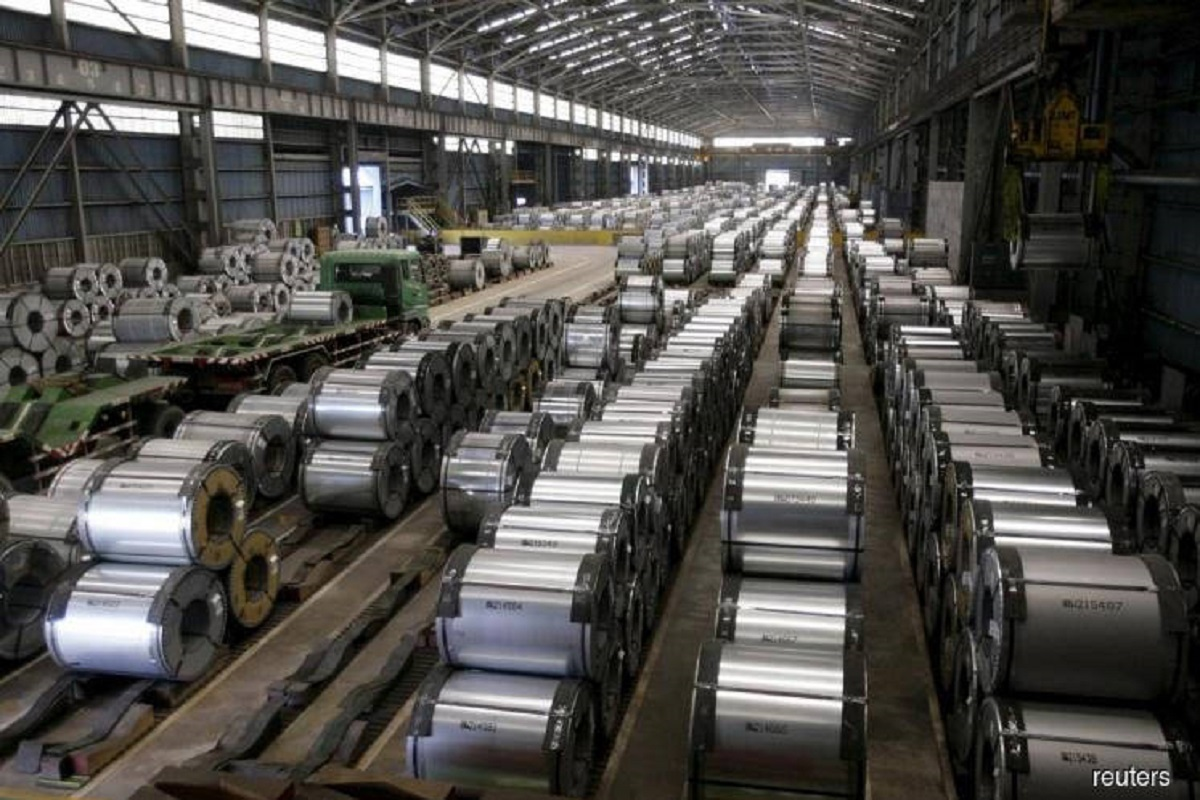Malaysia's steel consumption should stay below pre-pandemic levels through 2023, says MISIF

Malaysia's domestic steel demand is expected to continue its gradual recovery momentum through 2023, but the consumption level is likely to stay below pre-Covid-19 pandemic levels, according to a forecast by the Malaysian Iron and Steel Industry Federation (MISIF).
根据马来西亚钢铁业的预测,马来西亚国内钢铁需求预计将在 2023 年之前继续其逐步复苏势头,但消费水平可能会低于 Covid-19 大流行之前的水平联合会(MISIF)。
The federation projects apparent steel consumption (ASC) for Malaysia to reach 7.03 million metric tons (MT) this year, up from 6.81 million MT in 2020. ASC is then forecast to grow by 11% to 7.8 million MT in 2022, and 9% to 8.5 million MT in 2023.
该联合会预计,今年马来西亚的表观钢铁消费量(ASC)将从 2020 年的 681 万吨增至 703 万吨。然后预计 ASC 将增长 11% 至 2022 年的 780 万吨和 9%到 2023 年达到 850 万吨。
“We are still not bullish that things would be back to where it was before the pandemic,” MISIF president Datuk Lim Hong Thye told reporters after the launch of the federation’s 14th report on the status and outlook for the Malaysian iron and steel industry on 22nd June.
“我们仍然不看好事情会回到大流行之前的状态,”MISIF总裁拿督Lim Hong Thye在6 月 22 日发布该联合会关于马来西亚钢铁行业状况和前景的第14份报告后告诉记者。
Lim said the federation was conservative in its ASC forecasts, especially for infrastructure expenditure in Malaysia.
Lim说,该联合会的 ASC 预测是保守的,尤其是在马来西亚的基础设施支出方面。
“Malaysia’s consumption averaged around 9.5 million MT pre-pandemic. As you can see with our forecasts, even until 2023, we are still far away from where we were before Covid-19,” he said.
“在大流行前,马来西亚的平均消费量约为 950 万吨。正如您从我们的预测中看到的那样,即使到 2023 年,我们仍与 Covid-19 之前的水平相去甚远,”他说。
Nonetheless, recovery in ASC should still be supported by foreign direct investment into sectors like semiconductor and paper mills, which would spur construction activities as well, he said.
他说,尽管如此,ASC 的复苏仍应受到对半导体和造纸厂等行业的外国直接投资的支持,这也将刺激建筑活动。
Lim also sees potential growth driver for ASC from the automotive sector, particularly with new models by industry players like Proton and Perodua.
Lim 还看到汽车行业的 ASC 潜在增长动力,特别是 Proton 和 Perodua 等行业参与者的新车型。
In terms of exports, Lim said shipments of steel from Malaysia remain strong, which grew by 25% to 9.38 million MT last year from 7.49 million MT in 2020, mainly driven by demand from China.
在出口方面,Lim 表示,来自马来西亚的钢铁出货量依然强劲,从 2020 年的 749 万吨增长 25% 至去年的 938 万吨,主要受中国需求的推动。
Lim, who is also the group managing director of Ann Joo Resources Bhd, said China constituted 54.9% of Malaysia's total iron and steel exports last year, up from 47.1% in 2020.
也是 Ann Joo Resources Bhd 集团董事总经理的林说,去年中国占马来西亚钢铁出口总额的 54.9%,高于 2020 年的 47.1%。
“Southeast Asia continues to be an attractive region for steel trade and investment. The region’s ASC per capital of around 110kg is still well below the global average of 227.5kg,” he said.
“东南亚仍然是对钢铁贸易和投资有吸引力的地区。该地区人均 ASC 约为 110 公斤,仍远低于 227.5 公斤的全球平均水平,”他说。
Nonetheless, he said the steel industry is expected to encounter many challenges, including the decarbonisation of steel.
尽管如此,他表示钢铁行业预计将面临许多挑战,包括钢铁的脱碳。
“Globally, steel industries are now trending towards green steel. These are complex issues and their solutions are straightforward. Steel players will have to make tough decisions between short-term growth and long-term sustainability in situations where nobody knows what the right answers are,” he said.
“在全球范围内,钢铁行业现在正朝着绿色钢铁发展。这些都是复杂的问题,它们的解决方案很简单。在没人知道正确答案是什么的情况下,钢铁企业将不得不在短期增长和长期可持续性之间做出艰难的决定,”他说。
“For the first time, the domestic iron and steel industry will have to deal with issues related to climate change, new raw or input material strategies, critical investment decisions on steel-making technologies, and navigate a new socio-economic landscape governed by green policies such as carbon taxes and leakages,” he added.
“国内钢铁行业将第一次不得不应对气候变化、新的原材料或投入材料战略、炼钢技术的关键投资决策等问题,并驾驭绿色主导的新社会经济格局。碳税和泄漏等政策,”他补充说。
